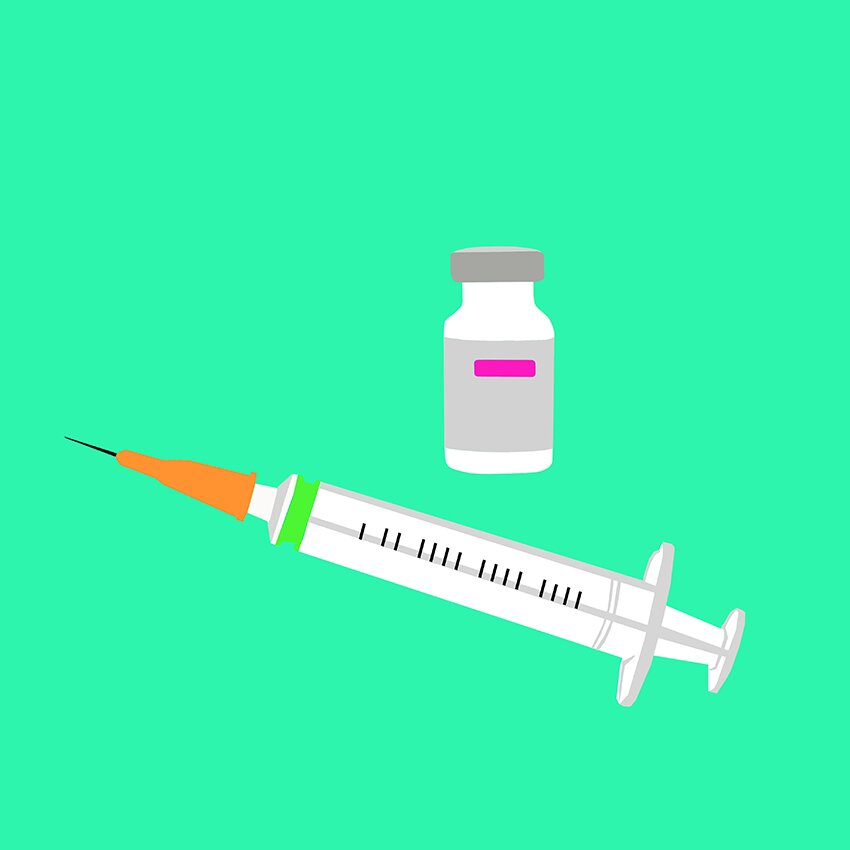< Vaccins
Quels sont les adjuvants des vaccins à ARN ?
Texte mis à jour le 2021-02-17
Les vaccins à ARN de Pfizer et de ModeRNA ne contiennent aucun adjuvant !

Le concept de base de la vaccination est de stimuler efficacement la réponse immunitaire face à un corps étranger. On parle d’immunogénicité pour définir la capacité du vaccin à induire une réponse immunitaire. Dans certains cas, l’immunogénicité n’est pas assez élevée. Pour la renforcer, des adjuvants sont alors ajoutés au principe actif du vaccin. Les adjuvants, comme par exemple, l’aluminium ou des substances dérivées des saponines (savons naturels), sont des molécules ajoutées à la composition du vaccin pour stimuler la réponse inflammatoire, et ainsi accroître l’immunogénicité du vaccin. La potentielle toxicité des adjuvants et leur potentiel rôle dans la survenue d’effets indésirables plus ou moins graves suite à la vaccination est un point qui peut susciter des hésitations face à la vaccination.
Le principe actif des vaccins de Pfizer et de Moderna est l’ARN. La bonne nouvelle c’est que contrairement aux vaccins inactivés et à protéine recombinante qui ont parfois besoin d’un adjuvant, les vaccins à ARN n’en ont pas besoin. En effet, l’ARN et les nanoparticules (très petites particules) contenant cet ARN sont déjà suffisamment immunogènes pour induire une réponse immunitaire efficace. Il n’est donc pas nécessaire d’ajouter un adjuvant pour améliorer la réponse immunitaire.
Les vaccins à ARN messager sont composés d’ARN et de nanoparticules lipidiques (particules grasses) qui entourent et protègent l’ARN, et lui permettent d’entrer dans les cellules humaines. Ces vaccins contiennent également de l’eau stérile, du sucrose pour la viscosité, une solution tampon qui permet de maintenir le pH et des sels.
De la même manière, le vaccin AstraZeneca à adénovirus recombinant ne contient pas d’adjuvants.



Sources
Liste des composés du vaccin ModeRNA
Annex I summary of product characteristics - Vaccine ModernaListe des composés du vaccin ModeRNA en français
Vidal - COVID-19 vaccine ModeRNAListe des composés du vaccin Pfizer BioNTech
Annex I summary of product characteristics - Pfizer BioNTechListe des composés du vaccin AstraZeneca Oxford
Annex I summary of product characteristics - AstraZeneca OxfordUn historique sur le développement des adjuvants.
Pasquale, A. D., Preiss, S., Silva, F. T. D., & Garçon, N. (2015). Vaccine adjuvants: from 1920 to 2015 and beyond. Vaccines, 3(2), 320-343.Discussion sur les adjuvants dans les vaccins, les connaissances actuelles, les problèmes et les perspectives.
Gupta, R. K., & Siber, G. R. (1995). Adjuvants for human vaccines—current status, problems and future prospects. Vaccine, 13(14), 1263-1276.Les vaccins à ARN sont très immunogènes.
Karikó, K., Buckstein, M., Ni, H., & Weissman, D. (2005). Suppression of RNA recognition by Toll-like receptors: the impact of nucleoside modification and the evolutionary origin of RNA. Immunity, 23(2), 165-175.